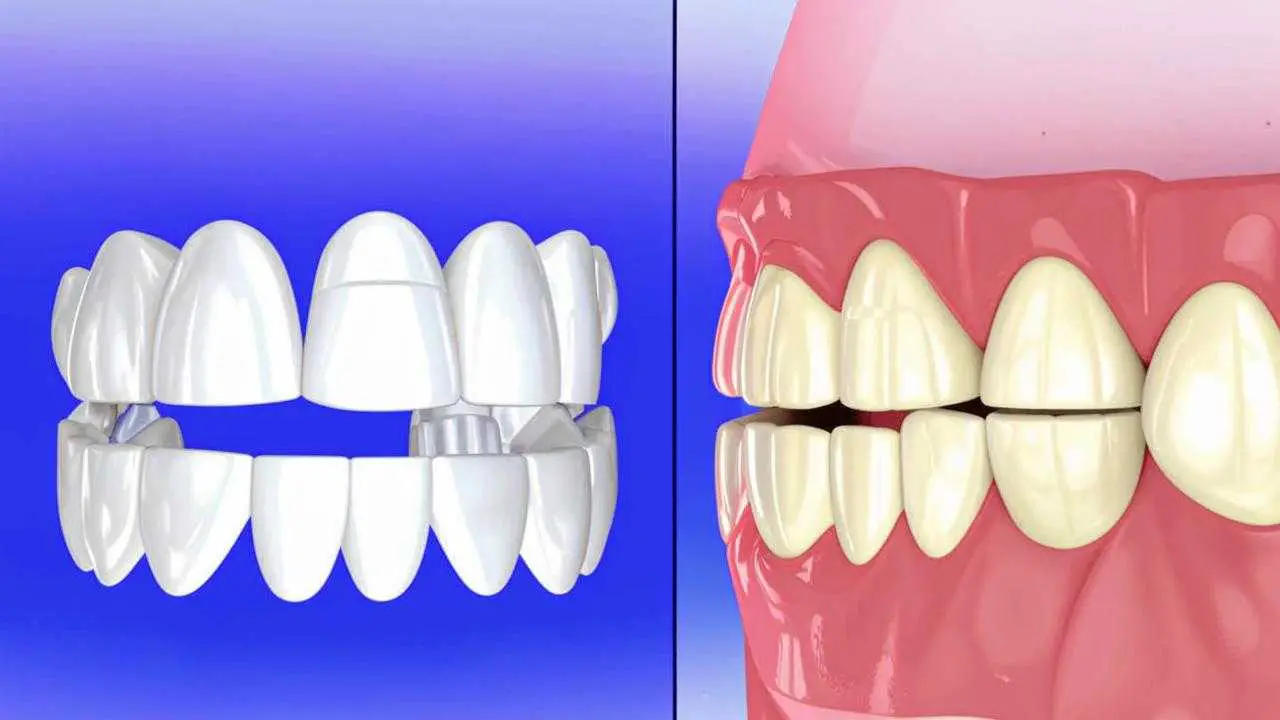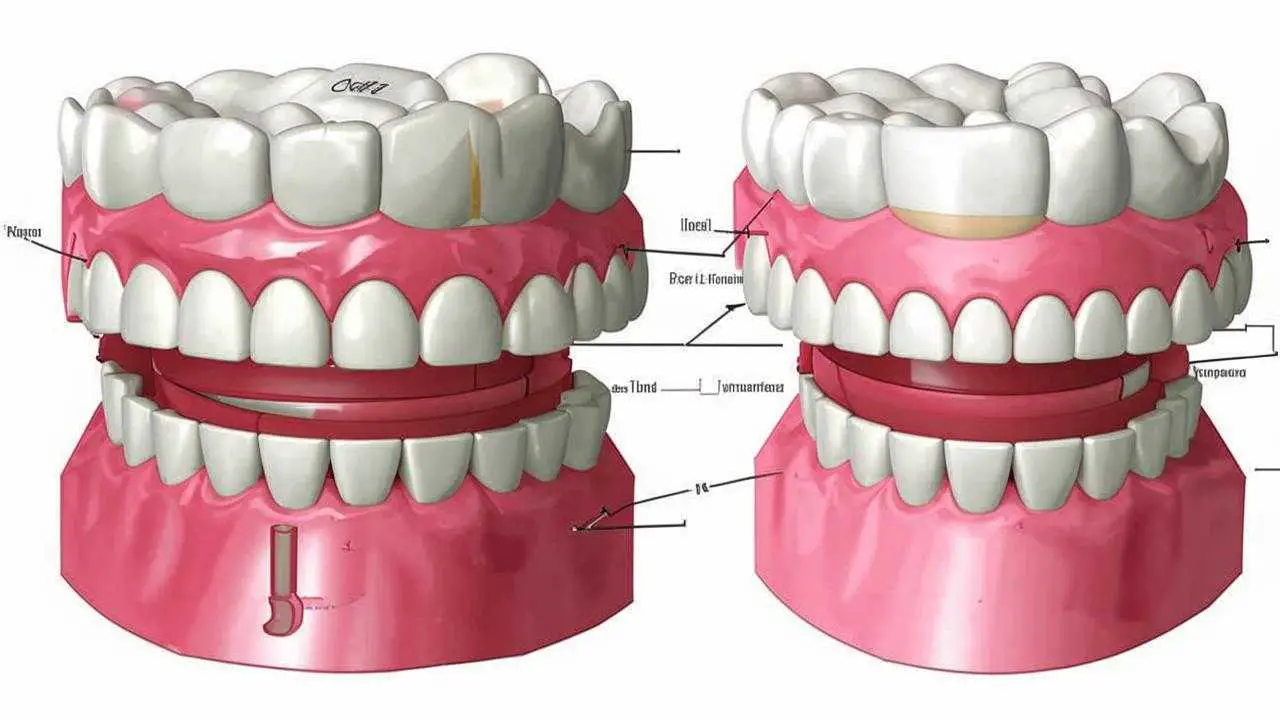” – Doctor, my crown on my tooth is wobbling, what should I do?” Such a question is not uncommon in the dental office. Not always patients understand why, instead of just fixing the crown, the doctor appoints an examination.
The task of the prosthodontist is not just to fix the prosthesis, but to find out the reason why the crown wobbles after installation.
Without examination, it is impossible to make an accurate diagnosis, and if the cause is not eliminated, the problem will occur again and again.
What causes the crown to wobble?
Part of the dental examination is the collection of anamnesis, especially if the prosthesis is several years old and with the problem you came to the wrong doctor who installed it.
The fact is that there are objective causes of crown loosening.
Dental cement changes its structure over time, and its adhesive (bonding) properties are lost. Crowns on the front teeth are particularly prone to loosening, because every bite leads to the fact that the adhesion becomes less.
Another objective cause is gum recession (loss). As we age, the gum sags, covering the roots less and less. A gap forms between the restoration and the gum, where food debris enters and bacterial colonies begin to flourish. They destroy the hard tissue, the residual limb becomes smaller, and the denture cannot be retained.
For this reason, dentists recommend regular replacement of crowns. Most often wobbles crowns made of metal-ceramic, because the residual limb under it is heavily machined, and the structure itself is massive, with thick walls. The service life of such crowns is the shortest: 5-7 years. The stronger the material, the thinner the crown, the better the fit, and therefore the longer the service life. Therefore, ceramic restorations, zirconium dioxide products can be worn for dozens of years.
But there are other reasons why a crown on a tooth becomes loose.
- Improper preparation
The crown for prosthetics must meet certain requirements: slightly taper to the lower edge, be at least 3 mm high (4 mm for molars).
If the doctor has done excessive grinding, then the crown will slide off the tooth like a slide, even with cement. There should be a minimal gap between the stump of the tooth and the walls of the crown. The smaller the gap, the more reliable.
It is possible that the tooth was originally short and the doctor did not do anything to grow it to the right size. It is possible to glue the crown on, but it will still fall off. The taller the tooth, the better the crown will fit on it.
The solution is to augment the residual limb with composite materials or inlays.
- Cement problems
Dental materials are expensive and some clinics buy cheap materials from unknown manufacturers. Patients suffer from such savings.
Another case is when the cement is of high quality, but the technology of its preparation was violated. The adhesive properties of such cement will not be good enough for the denture to last several years.
When retreating or reinserting, it is necessary to observe the proportions when mixing the cement and use a quality product.
- Violation of manufacturing techniques
The quality of the crown depends not only on the prosthodontist, but also on the technician who fabricates it. A qualified technician observes all the requirements for the manufacturing process and necessarily conducts sandblasting. This makes the inner surface rough, which increases adhesion (bonding).
Compliance with the fabrication requirements will increase the quality of the denture and lengthen its service life.
- Hard tissue loss
Before dentures, teeth are often depulped and the nerve (pulp) is removed. Therefore, a decayed tooth under a crown does not hurt, but it can be destroyed. If decay destroys most of the hard tissue, the crown will begin to wobble, because the volume of the residual limb will decrease.
The patient can only recognize that the tooth under the restoration is inflamed by the odor from under the crown. In dentistry for diagnosis, they use a targeted image, which shows the focus of the lesion. After treatment, the prosthodontist will build up the stump or use microprostheses before placing the crown. If the tooth cannot be saved, it will be extracted. The tooth will be restored with a bridge or implant. An implant will avoid grinding down neighboring teeth and prevent bone loss. A bridge cannot stop the atrophy.
Causes of a loose crown on a post and inlay
The reason why a crown on a post has started to wobble depends on cementation and proper placement:
- When attached to dental cement, the quality of the material is of great importance. Its job is to seal the gap between the tooth, the post and the crown.
- Improper placement of the post (fiberglass post) into the canal. In order to use a post, it is important that the majority of the tooth is preserved. The post is responsible for stability, but the crown holds onto the tooth. If the post is poorly anchored or the tooth is severely decayed, the denture will wobble.
An inlay, unlike a post, consists of two parts, the post itself and a tooth-matching element. An inlay crown will wobble if:
- the inlay has become uncemented;
- parts of the inlay have separated.
Re-prosthetics in cases where pins and inlays are used will take longer. It is necessary to install microprostheses in accordance with the methodology, correct the defects that led to the loss, and then install a new crown. Trying to fit a microprosthesis to an old restoration will result in the entire structure having to be replaced again.
Causes of implant crown loosening
If the crown is cemented to the adapter (abutment), the most common cause of loosening is poor material quality. With screw anchoring, the prosthesis is fixed with special screws to the implant, which serves as the root. This method is considered to be more reliable than cement fixation. But the attachment is loaded from different sides and the screw can loosen.
The doctor can easily strengthen a wobbly crown by simply tightening the screw. Screw retainers are more expensive, but as a result, the crown does not have to be replaced every time it becomes loose. The dentist can see the progress of implant healing better and screw-retained dentures are much easier to work with.
What should I do if my implant crown wobbles? It is necessary to see a doctor immediately. This may be a symptom of implant rejection or inflammation of the tissue around the implant. In such cases, special treatment is necessary.
Temporary crowns
The implantation process involves a rather long (depending on the protocol) waiting period while the artificial root takes root. During this time, the patient is fitted with temporary prostheses.
Temporary crowns are made of inexpensive materials that are not rigid enough. If they are not well cared for, infection can easily get to the tooth. Therefore, in most cases, the reason why a temporary implant crown wobbles is due to poor care and excessive chewing.
Prevention
Proper care of dentures will prolong their life and keep the teeth under the crowns from breaking down:
- Brush your teeth at least 2 times a day;
- Floss or use an irrigator;
- Have regular professional dental cleanings;
- Avoid foods that stick to the teeth;
- Avoid chewing on hard foods or objects.
These measures will prevent bacteria and decay products from getting under the restoration, keeping the tooth from breaking down and extending the life of the denture.
If a dental crown is wobbling, you should visit a dental clinic as soon as possible. It should not be delayed, if the crown falls out, it can be accidentally swallowed.
If the crown does fall out, carefully remove it, rinse it with any antiseptic solution. Put it in a dry, airtight container. With the same solution or just boiled water rinse the mouth. Try to see a dentist as soon as possible. In the meantime, avoid chewing on the side without the denture.
Choosing a clinic and dentist can also be considered a preventive measure. Reputable clinics use high-quality, certified materials and employ highly qualified doctors. Large centers give a guarantee on materials and on the work of doctors. Therefore, loosening will most often be avoided. In addition, large clinics have their own dental laboratories, which guarantees high quality work of technicians, because the result affects the reputation of the clinic.



